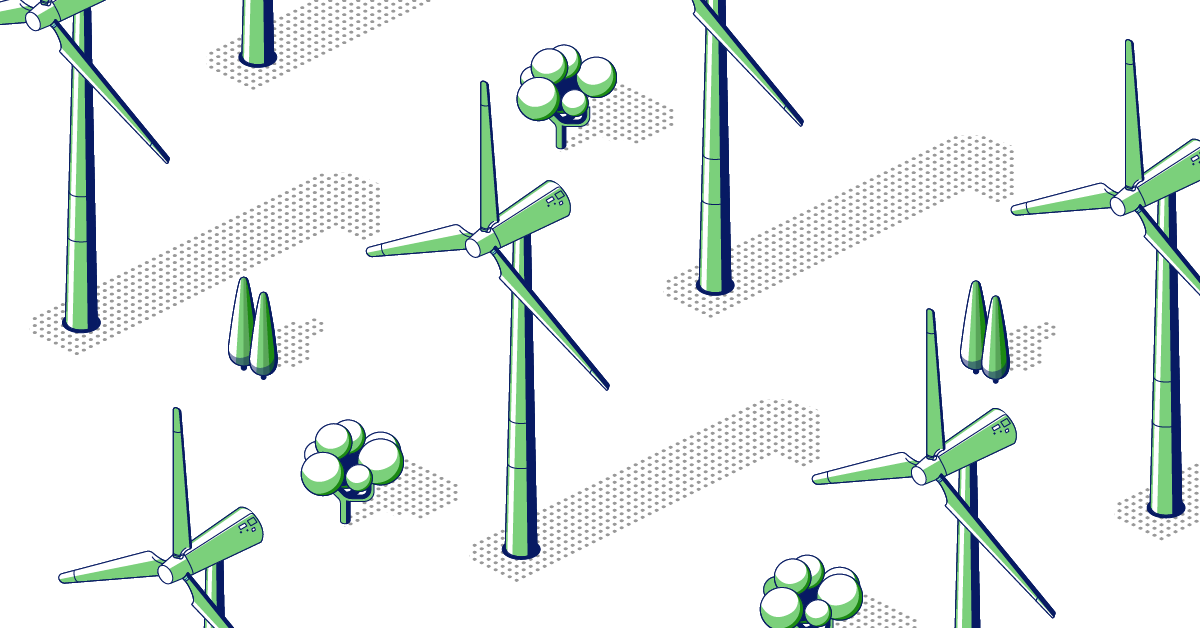Producing power: Wind generation in the UK
Exposed to the blustery elements of the North Atlantic, it’s no wonder the UK is a world leader when it comes to wind power generation. In 2020, wind contributed 24.8% of all power generated, and on December 29 2020, Storm Bella saw wind power provide more than 50% of the UK’s energy needs for the first time ever.
As the UK progresses towards its target of net zero carbon emissions by 2050, wind will only become a more important asset in decarbonising the country’s energy system. This will not just be driven by large generators installing offshore wind farms, but also businesses and communities able to grasp the opportunity renewable energy generation offers.

Powering the future
Relentless improvement in technology and lower installation costs have pushed the growth of wind power, but so has determined promotion via government incentives. The UK has set a target of 40GW of installed wind capacity by 2030, an increase from the 24.1 GW generated by more than 10,000 turbines today. Wind power is at the heart of the government’s Build Back Greener initiative, with £160 million being made available to upgrade and develop offshore wind capacity.
Much of this future generating capacity will come from large wind farms. However, businesses, organisations and communities can also play an important role in the growth of wind power with individual turbines. Small scale wind installations will have a crucial role to play as the UK moves to a more decentralised system with a greater number of distributed generation assets spread around the country.
Turning generators into vendors
Smaller-capacity wind installations support the energy system by offering flexibility in the form of excess power stored in adjoining battery systems. When there’s a sudden spike in UK electricity demand, independent generators can sell any excess or stored power back to the grid. By generating their own power, businesses and communities also reduce power demand on the grid, helping it remain stable.
By increasing the amount of independent wind power generation, the UK can also reduce its dependency on emissions-intensive forms of power. If there’s a spike in demand for electricity the grid can acquire renewable power from independent generators with excess capacity, rather than being forced to bring a gas or coal power source online to meet demand.
A key mechanism in supporting the growth of independent generators are Power Purchase Agreements (PPAs), which help promote the growth of independent generation. Electricity suppliers will give a fixed price to the generators for their excess energy, over an agreed period. This energy will then be sold on to supply customers. For owners of small-scale wind installations, PPAs allow them to generate extra revenue, enjoy price certainty and stay in control.

One such example is Ashby Farms, in Daventry, Northamptonshire. The business’s run by a family that’s farmed the area for generations. For the Ashbys, renewable energy offers a way of both generating revenue for their business and protecting the environment on which their livelihood is built.
“Farming is the basis of the business, but we’ve since diversified into renewable energy,” explains Roger Ashby. “We chose a wind turbine because an initial investigation found there was sufficient windspeed in the area to support a wind turbine, and so we pushed ahead.”
The family installed a wind turbine in 2014 and, through a PPA, they’re paid for every unit of electricity generated on site.
Looking for a partner?
At Drax, we’ve partnered with more than 2,300 renewables generators – including 810 sites dedicated to wind power, with a total generating capacity of nearly 141 MW.
If you’re a generator ready to sell power, then Drax is the ideal partner. We have a history of working with sellers of all sizes, meaning we can find a PPA that’s right for you, whatever your technology, volume, or risk appetite.
To understand how you can use your own generating capacity to help support the future of wind power in the UK, get in touch today.
Contact usDisclaimer
We’ve used all reasonable efforts to ensure that the content in this article is accurate, current, and complete at the date of publication. However, we make no express or implied representations or warranties regarding its accuracy, currency or completeness. We cannot accept any responsibility (to the extent permitted by law) for any loss arising directly or indirectly from the use of any content in this article, or any action taken in relying upon it.


